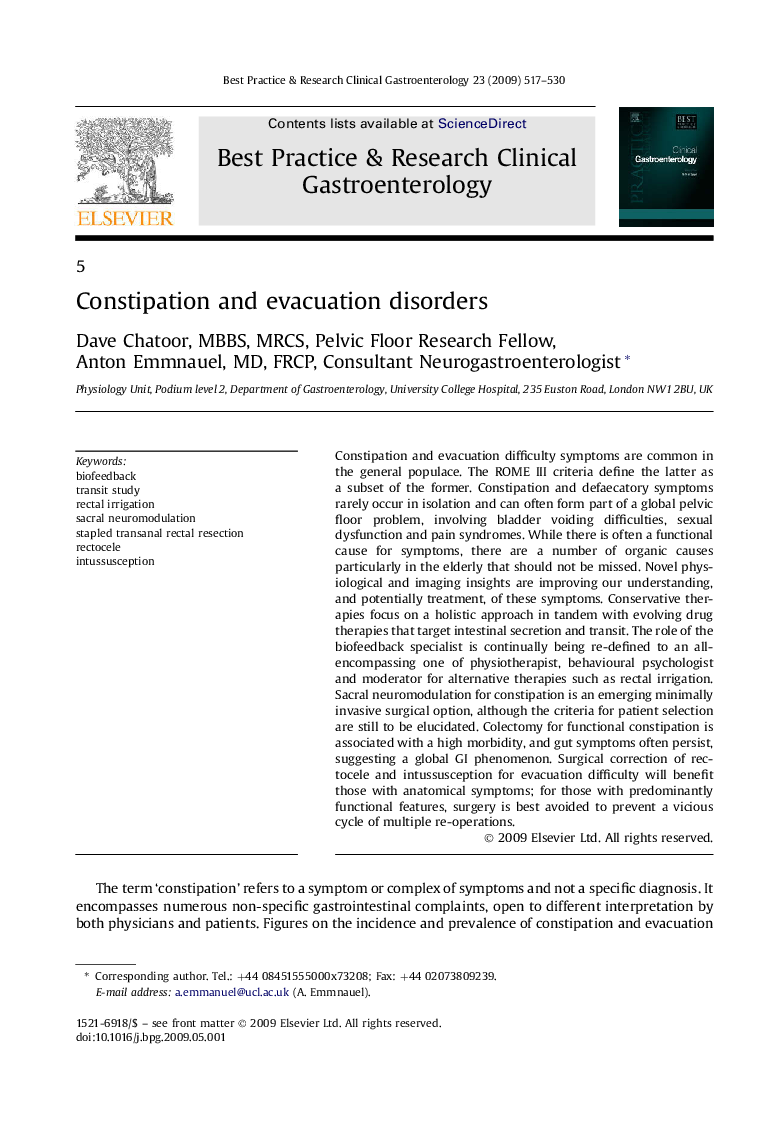| Article ID | Journal | Published Year | Pages | File Type |
|---|---|---|---|---|
| 3254555 | Best Practice & Research Clinical Gastroenterology | 2009 | 14 Pages |
Constipation and evacuation difficulty symptoms are common in the general populace. The ROME III criteria define the latter as a subset of the former. Constipation and defaecatory symptoms rarely occur in isolation and can often form part of a global pelvic floor problem, involving bladder voiding difficulties, sexual dysfunction and pain syndromes. While there is often a functional cause for symptoms, there are a number of organic causes particularly in the elderly that should not be missed. Novel physiological and imaging insights are improving our understanding, and potentially treatment, of these symptoms. Conservative therapies focus on a holistic approach in tandem with evolving drug therapies that target intestinal secretion and transit. The role of the biofeedback specialist is continually being re-defined to an all-encompassing one of physiotherapist, behavioural psychologist and moderator for alternative therapies such as rectal irrigation. Sacral neuromodulation for constipation is an emerging minimally invasive surgical option, although the criteria for patient selection are still to be elucidated. Colectomy for functional constipation is associated with a high morbidity, and gut symptoms often persist, suggesting a global GI phenomenon. Surgical correction of rectocele and intussusception for evacuation difficulty will benefit those with anatomical symptoms; for those with predominantly functional features, surgery is best avoided to prevent a vicious cycle of multiple re-operations.
